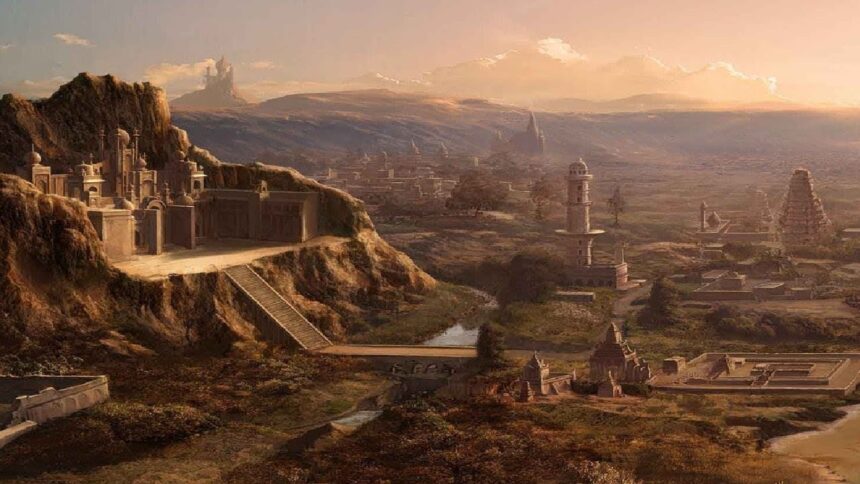Archaeologists have long been fascinated by the ancient ruins scattered across Naswangey, Arizona. This article takes you on a journey to uncover the secrets of a mysterious lost civilization that once thrived in this harsh desert landscape. Join us as we delve into the history, culture, and enduring legacy of these enigmatic people.
Introduction to Naswangey
Deep within the arid landscapes of Arizona, lies the nearly forgotten tale of Naswangey – a lost civilization that once thrived under the harsh sun. This mysterious culture has left history buffs fascinated and curious about its origins, achievements, and ultimate disappearance. This blog post aims to unravel the story of Naswangey, offering an in-depth look at its historical significance and the cultural legacy it left behind.
You May Also Like To Read: The Evolution of Historical Landmarks Through the Ages
Discovery and Rediscovery
Initial Discovery
The initial discovery of Naswangey dates back to the late 19th century when archaeologists first stumbled upon remnants of this obscure civilization. Hidden beneath layers of sand and time, Naswangey’s ruins revealed a society rich in culture and technological prowess. These early findings marked the beginning of a long and arduous quest to understand a civilization that had faded into obscurity.
Significance of Rediscovery
Rediscovering Naswangey in the modern era is nothing short of monumental. Recent archaeological efforts have shed light on its sophisticated societal structure, providing valuable insights into pre-Columbian America. The rediscovery has reignited interest and has led to numerous preservation projects aimed at safeguarding this cultural treasure.
Preservation of Heritage
Modern-day archaeologists and historians are tirelessly working to preserve Naswangey’s heritage. Initiatives include careful excavation, documentation, and the creation of protective measures for its artifacts. Through these efforts, Naswangey continues to offer valuable lessons and enrich our understanding of ancient civilizations.
Cultural and Technological Advancements
Naswangey Architectural Achievements
Naswangey is renowned for its remarkable architectural feats. The civilization’s structures, built with meticulous precision, reflect an advanced understanding of engineering and construction techniques. From intricate stone carvings to complex building layouts, Naswangey’s architecture stands as a testament to their ingenuity.
- Stone Carvings: Intricate designs depicting daily life and celestial events.
- Building Layouts: Strategically planned to withstand environmental challenges.
- Engineering Techniques: Use of advanced methods for stability and durability.
Naswangey Advanced Agricultural Techniques
Agriculture was the lifeblood of Naswangey. Their advanced farming methods allowed them to thrive in an unforgiving environment. They employed innovative irrigation systems and crop rotation techniques that maximized yield and sustainability.
- Irrigation Systems: Ingenious channels that directed water to arid fields.
- Crop Rotation: Ensured soil fertility and consistent harvests.
- Agricultural Tools: Primitive yet effective tools that revolutionized farming.
Significance of Their Artwork
Artwork was a vital aspect of Naswangey culture. Their art not only adorned their surroundings but also conveyed stories, traditions, and beliefs. Each piece of art served as a cultural artifact, revealing the civilization’s values and way of life.
- Cultural Artifacts: Paintings and sculptures that depicted rituals and daily activities.
- Symbolic Representations: Artworks that symbolized spiritual and societal norms.
- Preserved Pieces: Efforts to protect and study these artifacts continue to offer insights.
Theories on Decline
Environmental Changes
One theory suggests that climatic shifts played a significant role in Naswangey’s decline. Prolonged droughts and changing weather patterns could have severely impacted their agricultural output, leading to food shortages and societal stress.
- Prolonged Droughts: Reduced water supply affecting crop growth.
- Changing Weather Patterns: Unpredictable climate destabilizing their way of life.
- Impact on Agriculture: Strain on resources contributing to population decline.
Social and Political Factors
Internal strife and political instability are also believed to have contributed to Naswangey’s downfall. Conflicts over resources, power struggles, and social fragmentation may have weakened the fabric of their society.
- Resource Conflicts: Disputes over scarce resources causing internal tension.
- Power Struggles: Leadership conflicts leading to societal divisions.
- Social Fragmentation: Breakdown of communal bonds weakening societal structure.
External Pressures
External pressures, such as invasions or interactions with neighboring civilizations, might have also played a role. These external influences could have disrupted Naswangey’s way of life, leading to their eventual decline.
- Invasions: Attacks from neighboring tribes or groups.
- Cultural Exchanges: Influences that altered their traditional practices.
- Disruption of Trade: Loss of trade routes impacting economic stability.
Naswangey Modern Impacts and Preservation Efforts
Cultural Heritage of Arizona
Naswangey’s legacy continues to influence Arizona’s cultural heritage. The remnants of this civilization are celebrated through museums, cultural programs, and educational initiatives aimed at preserving and promoting their history.
- Museums: Exhibits showcasing Naswangey artifacts and history.
- Cultural Programs: Events and workshops celebrating their heritage.
- Educational Initiatives: School programs and resources highlighting their significance.
Naswangey Ongoing Preservation Projects
Preservation efforts are crucial in ensuring that Naswangey’s heritage is not lost to time. Projects include site restorations, digital documentation, and community involvement in protecting these historical treasures.
- Site Restorations: Efforts to rebuild and maintain ancient structures.
- Digital Documentation: Creating digital archives for future research.
- Community Involvement: Engaging local communities in preservation efforts.
Lessons for Future Generations
Naswangey’s story offers valuable lessons for future generations. It highlights the importance of understanding our past, preserving our heritage, and learning from the successes and failures of ancient civilizations.
- Understanding Our Past: Gaining insights into human history and development.
- Preserving Heritage: The significance of protecting cultural legacies.
- Learning from History: Applying historical lessons to modern challenges.
Conclusion
Naswangey, the lost civilization of Arizona, serves as a fascinating chapter in human history. Its discovery and rediscovery have offered invaluable insights into ancient societal structures, cultural practices, and technological advancements. By studying Naswangey, we not only honor a civilization that once thrived but also learn important lessons about resilience, innovation, and the need to preserve our cultural heritage.
Frequently Asked Questions (FAQs)
1. Who were the Naswangey?
The Naswangey were an ancient civilization that thrived in what is now Arizona, known for their advanced engineering, architecture, and agricultural techniques.
2. What innovations are the Naswangey known for?
They are known for their intricate stone carvings, strategically planned building layouts, advanced irrigation systems, and effective crop rotation methods.
3. What led to the decline of the Naswangey civilization?
The decline is believed to be due to a combination of environmental changes, internal social and political factors, and external pressures such as invasions.
4. How is Naswangey’s cultural heritage preserved today?
Their heritage is preserved through museum exhibits, cultural programs, educational initiatives, site restorations, and digital documentation.
5. What lessons can we learn from the Naswangey civilization?
We can learn the importance of understanding our past, preserving cultural heritage, and applying historical lessons to address modern challenges.







